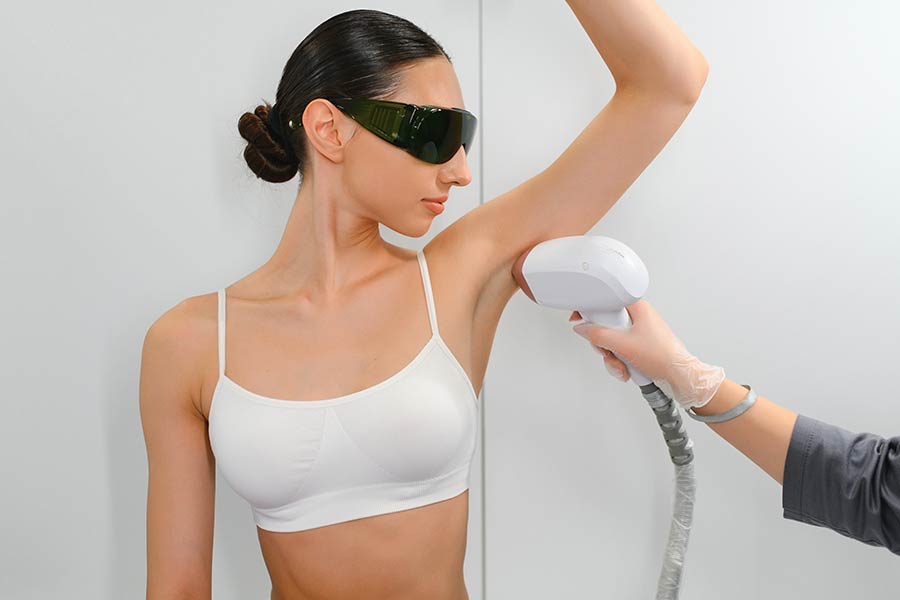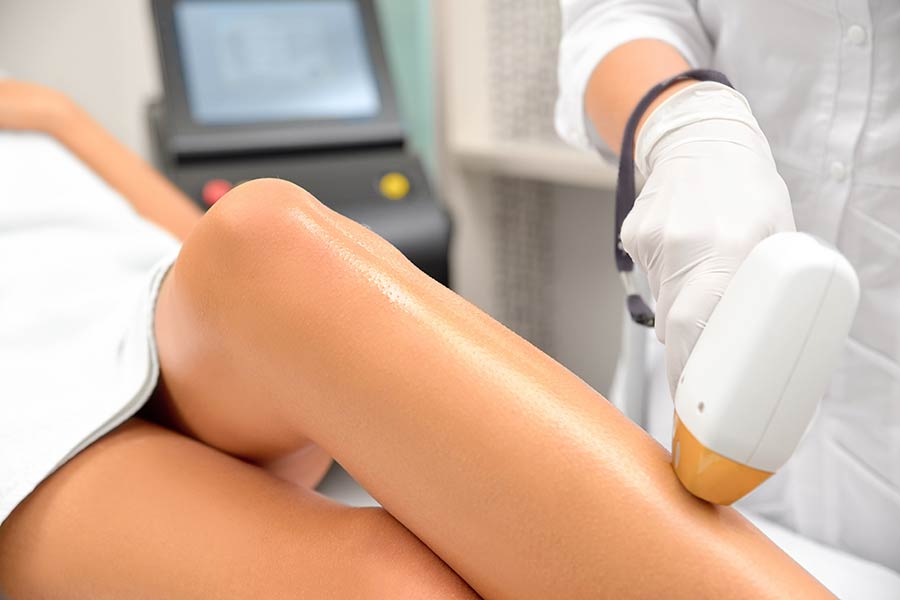Ever wondered what happens to your skin after years of using dermal fillers? The long-term effects of dermal fillers are a hot topic, stirring both curiosity and concern among those aiming for that forever young look. Dermal fillers, celebrated for their immediate results in enhancing facial volume and smoothing out wrinkles, have become a staple in cosmetic treatments. But as we dive deeper into the realm of aesthetic enhancements, understanding the lasting impact these substances have on our skin is crucial. From subtle shifts in facial contours to the potential need for ongoing treatments, the journey with dermal fillers is one worth exploring. Let's peel back the layers on this beauty trend and uncover what lies beneath the surface after years of use.
Key Takeaways
- Dermal fillers can offer lasting beauty enhancements, but it's vital to weigh the benefits against potential risks.
- Hyaluronic acid fillers are a popular choice due to their natural compatibility with the body and reversible effects.
- To minimize risks, choose an experienced injector and discuss your medical history and allergies beforehand.
- Be aware of possible adverse reactions, such as swelling or more serious complications, and how to manage them if they occur.
- Comparing different types of fillers and alternatives can help you make an informed decision that aligns with your beauty goals.
- Follow consumer tips, like avoiding certain medications before treatment, to ensure the best possible outcome with dermal fillers.
Understanding Dermal Fillers
Basics and Types
Dermal fillers are substances injected under the skin to restore lost volume, smooth lines, or enhance facial contours. Their primary use in cosmetic treatments has grown significantly. There are several types of dermal fillers available, each suited for different needs and areas of the face.
- Hyaluronic acid fillers are popular for their natural look and feel. They can hydrate the skin as well.
- Calcium hydroxylapatite is known for its longer-lasting results, especially in deeper lines.
- Poly-L-lactic acid fillers help stimulate collagen production over time.
Each type has specific benefits. Hyaluronic acid works well for lips and fine lines. Calcium hydroxylapatite suits deeper wrinkles. Poly-L-lactic acid is ideal for overall volume enhancement.
Official Uses
The FDA has approved dermal fillers for various cosmetic uses, including lip augmentation and the correction of facial wrinkles and creases. These approvals ensure that products meet strict safety standards before reaching consumers.
Off-label uses are also common in cosmetic practice. Many practitioners use fillers in ways not specifically approved by the FDA but have shown success in enhancing facial features safely.
Consulting with a healthcare professional is crucial before undergoing any filler treatment. They can provide guidance on the most appropriate type of filler based on individual needs and desired outcomes.
FDA-approved Materials
Several materials used in dermal fillers have received FDA approval due to their safety profiles. These include hyaluronic acid, calcium hydroxylapatite, poly-L-lactic acid, polymethylmethacrylate beads (PMMA), and autologous fat injections taken from one's body.
Choosing FDA-approved fillers is vital for ensuring treatment safety and effectiveness. The FDA approval process involves rigorous testing for safety and efficacy, including clinical trials and review of manufacturing practices.
Positive Long-term Effects
Enhanced Skin Quality
Dermal fillers do more than just fill in lines. They improve skin texture and tone. This means skin looks smoother and more even. Fillers have a special ingredient that helps with this.
They also hydrate the skin. Hydration is key for a youthful look. It makes the skin plump and reduces dryness.
Fillers can lessen the look of fine lines too. This makes your face appear younger. Over time, you'll notice these changes stick around.
Lasting Volume Addition
Fillers add volume where it's needed, like sunken cheeks or a thin jawline. This change can last a long time, depending on the filler used.
The effects of volume addition vary by filler type. Some last longer than others. But all aim to give you a fuller, more youthful look.
Common areas treated include the cheeks and jawline. These spots often lose volume as we age. Fillers bring back that lost fullness, enhancing your facial contours.
Collagen Stimulation
Certain fillers kickstart your body's collagen production. Collagen is what keeps our skin firm and elastic.
This increase in collagen has long-term benefits. It helps make the skin stronger and more flexible. Over time, this leads to better skin quality.
The improvements are gradual but noticeable. Your skin feels firmer and looks healthier thanks to this collagen boost.
Potential Adverse Reactions
Common Side Effects
Dermal fillers can lead to swelling, bruising, and redness at the injection site. These are common and usually mild. They tend to go away within a few days or weeks.
Despite the positive effects discussed earlier, it's important to know these side effects. Rarely, serious issues like infection or allergic reactions may occur. If you notice severe pain or changes in skin color, seek medical help immediately.
Late Reactions Management
etimes, side effects from dermal fillers show up weeks or months later. Nodules or inflammation are examples of this. It's crucial to have regular check-ups with your doctor to catch these early.
If you have long-lasting or strange symptoms, contact a healthcare provider right away. They can help manage these reactions and keep them from getting worse.
Foreign Body Responses
A foreign body response happens when the body sees the filler as an invader. This can cause lumps or granulomas around the filler area. It's not common but is more likely with certain types of fillers.
To prevent this, choose experienced professionals for your injections. If you do get a foreign body response, treatments are available. Your doctor might suggest medication or surgery to remove the problem area.
Hyaluronic Acid in Focus
Overview and Roles
Dermal fillers, especially those containing hyaluronic acid, offer a range of cosmetic benefits. They primarily smooth out wrinkles and add volume to the face. This makes them key in anti-aging treatments. Fillers can plump up thin lips, enhance shallow contours, and improve the appearance of recessed scars.
Their role extends beyond simple wrinkle filling. They are instrumental in facial rejuvenation. This includes bringing back volume lost to aging and correcting asymmetries. The versatility of dermal fillers lies in their ability to address multiple aesthetic concerns with minimal downtime.
Production and Breakdown
Our bodies naturally produce substances similar to those found in many dermal fillers, like hyaluronic acid. This substance is crucial for maintaining skin hydration and volume. Most fillers are biodegradable, meaning they break down over time.
The breakdown process is influenced by factors such as the body's metabolism rate and the type of filler used. Some fillers dissolve faster than others due to their composition. For instance, hyaluronic acid fillers tend to break down within 6 to 18 months, depending on the treatment area and the individual's metabolic rate.
Medical Applications
Beyond cosmetic enhancements, dermal fillers have significant medical applications. They play a vital role in correcting facial asymmetries and scars resulting from accidents or surgeries. Such corrections can greatly improve a person's self-esteem and quality of life.
Fillers also offer therapeutic benefits for conditions like lipoatrophy, where there is severe fat loss under the skin. In these cases, fillers can help restore lost volume and support affected areas. This highlights the important intersection between cosmetic procedures and therapeutic interventions.
Minimizing Risks
Choosing Qualified Practitioners
Selecting a licensed and experienced practitioner is crucial for safe filler injections. Before deciding, research their qualifications thoroughly. Look for positive reviews from previous clients.
During the consultation, ask specific questions about their experience with fillers, especially if you're interested in hyaluronic acid treatments discussed earlier. Inquire about their training and the types of fillers they use. This ensures you choose someone with the right expertise and safety standards.
Understanding Filler Materials
Filler materials vary widely, from temporary to permanent solutions. Temporary fillers, like hyaluronic acid, are absorbed by the body over time. Semi-permanent fillers last longer but eventually break down. Permanent fillers do not degrade within the body.
Each type has its pros and cons. Temporary fillers are safer but require regular maintenance. Semi-permanent and permanent fillers offer long-lasting results but come with higher risks of complications.
Understanding these materials helps in choosing the right treatment plan for your needs. It's essential to discuss options with your practitioner, considering both benefits and potential risks.
Recognizing Warning Signs
After treatment, watch for warning signs that may indicate complications. These include unusual pain, skin discoloration, or vision changes. If you notice any of these symptoms, contact your practitioner immediately.
Immediate steps can prevent further issues, so don't hesitate to seek help. Informing your practitioner about any adverse reactions is vital for your health and safety.
Managing Complications
Treatment Options
Various treatment plans exist for those using dermal fillers. Doctors tailor these treatments to meet each person's needs and goals. Some might need minor touch-ups, while others may opt for more comprehensive changes. The beauty of dermal fillers lies in their versatility. They can plump lips, smooth wrinkles, and enhance facial contours.
Combining fillers with other cosmetic procedures often yields better results. For instance, pairing them with Botox can address both dynamic and static wrinkles, offering a more youthful appearance. This multi-faceted approach allows for a customized experience that aligns closely with individual desires.
When to Seek Medical Advice
etimes, things don't go as planned. If you notice unexpected side effects after getting fillers, it's crucial to seek medical advice immediately. Signs like unusual swelling, pain beyond the initial recovery period, or any changes in skin color around the treated area warrant professional attention.
Regular follow-ups are vital for maintaining optimal outcomes from filler treatments. These sessions allow your doctor to monitor progress and make adjustments as needed. They also provide an opportunity to discuss any concerns or dissatisfaction with the results.
For long-term management, understanding the maintenance required is key. Dermal fillers are not permanent solutions; they require periodic updates to sustain their effects. Knowing when to return for maintenance treatments helps keep the desired look intact over time.
Comparing Fillers and Alternatives
Botox Versus Fillers
Botox and dermal fillers both aim to reduce signs of aging. However, they work differently. Botox temporarily paralyzes muscles to smooth wrinkles. Dermal fillers, on the other hand, fill in wrinkles or add volume.
The effects of Botox last about 3 to 4 months. Dermal fillers can last from 6 months to over a year, depending on the type used. Patients often use both for a comprehensive anti-aging treatment. While Botox is best for expression lines around the eyes and forehead, fillers are ideal for deeper lines and volume loss in cheeks and lips.
Combining these treatments can offer a more youthful appearance than using either alone. But it's crucial to consult with a professional to achieve balanced results.
Natural Alternatives
For those wary of injectables or managing complications from previous procedures, natural alternatives exist. Skincare routines that include retinol and hyaluronic acid can improve skin texture and hydration. Facial exercises may also stimulate muscles and skin for a firmer look.
These methods are safer but require time and consistency for noticeable results. They cannot replicate the immediate or dramatic effects of fillers but can enhance overall skin health. Adding foods rich in antioxidants and staying hydrated support skin quality from within.
Consumer Tips
Before Getting Fillers
Before diving into the world of dermal fillers, educate yourself on the different types available. Each filler has its unique properties and potential side effects. Knowing these can help you make an informed decision.
It's crucial to have a detailed consultation with a healthcare provider. They can guide you through your options based on your skin type and desired results. This conversation should also cover any risks and how they relate to your health history.
Prepare a list of questions for your provider about the procedure, what recovery looks like, and how to care for your skin post-treatment. Understanding these aspects fully can ease any nerves and set clear expectations.
Post-treatment Care
After getting fillers, certain steps can help minimize side effects and encourage healing. For instance, avoiding strenuous exercise and direct sunlight can prevent swelling and bruising. Applying ice in the first few hours post-procedure can also be beneficial.
Following the practitioner's care instructions is key to achieving the best outcomes. These guidelines are designed not just for quick recovery but for maintaining the effects of the fillers as long as possible.
Be vigilant for signs that may warrant a follow-up visit, such as unusual swelling or discomfort beyond the expected recovery period. These could indicate a need for further care or adjustment of the fillers.
Summary
Dermal fillers can give your skin a plump, youthful look, but it's essential to weigh both the good and the not-so-good. From smoothing out wrinkles to potential side effects, knowing what you're signing up for helps you make smarter choices for your skin health. Hyaluronic acid fillers are a popular pick, often praised for their natural results and reversibility. Yet, choosing the right type and managing any possible complications requires expert advice. Tips like researching qualified professionals and understanding your skin’s needs can steer you towards safer, satisfying outcomes.
Your journey with dermal fillers doesn’t end at the treatment chair. Taking steps to minimize risks and knowing how to handle any issues ensures you enjoy the benefits longer without unwanted surprises. Remember, it's all about making informed decisions that align with your beauty goals. Ready to take the next step? Consult a trusted dermatologist or cosmetic specialist today and discover how dermal fillers can enhance your natural beauty.
Frequently Asked Questions
What are dermal fillers and how do they work?
Dermal fillers are injectable substances used to restore facial volume, enhance contours, and reduce wrinkles. They work by filling in the treated area, providing immediate results that can last for months or even years, depending on the type of filler used.
What are the positive long-term effects of using dermal fillers?
Long-term benefits include improved skin texture, volume restoration, and diminished lines and wrinkles. Regular use can also stimulate natural collagen production, leading to healthier-looking skin over time.
Can dermal fillers cause adverse reactions?
Yes, while generally safe, some individuals may experience side effects such as swelling, bruising, or redness at the injection site. Rarely, more serious complications like infection or filler migration can occur.
Why is hyaluronic acid a popular choice for fillers?
Hyaluronic acid is favored for its safety profile and compatibility with the body. It naturally occurs in the skin, helping to retain moisture and softness. Its effects are also reversible with a specific enzyme if needed.
How can risks associated with dermal fillers be minimized?
Choosing an experienced injector and discussing your medical history beforehand can significantly minimize risks. Following pre- and post-treatment instructions carefully also reduces the likelihood of complications.
What should be done if complications from dermal fillers arise?
Immediate consultation with your healthcare provider is crucial. Most issues can be managed effectively when addressed early. In cases involving hyaluronic acid fillers, an enzyme called hyaluronidase can be used to dissolve the filler rapidly.
How do dermal fillers compare to other cosmetic treatments?
Fillers offer temporary but immediate results with minimal downtime compared to surgical options. They're versatile but best suited for volume loss and wrinkle treatment. Alternatives like Botox work differently by relaxing muscles to reduce wrinkles and may complement filler treatments for comprehensive facial rejuvenation.

















